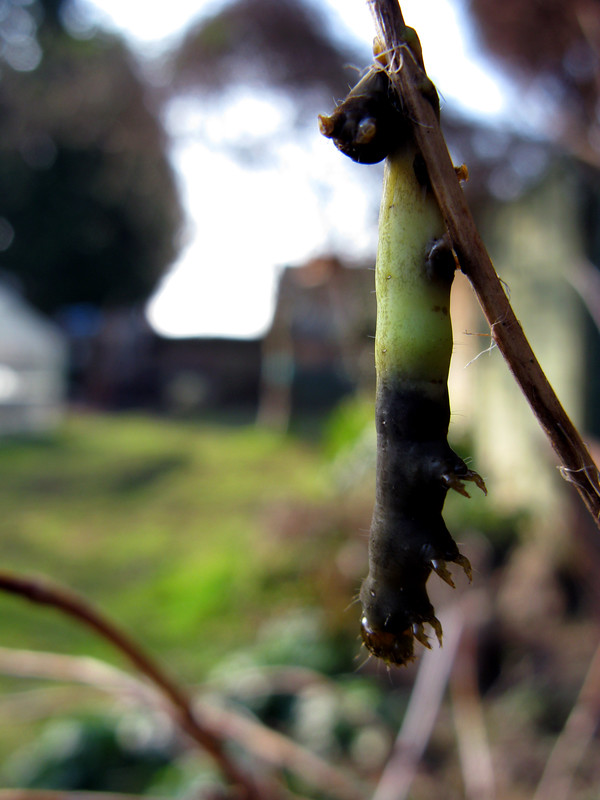
Sometimes a blog must serve as a repository of regrets, a place to atone for not including some perfect fact in a book. While working on my book Parasite Rex, I came across many delicious examples of parasites manipulating the behavior of their hosts for their own benefit. After the book came out, I met scientists who enlightened me about other examples which would have been wonderful to include. A few years back, for example, a Johns Hopkins scientist pointed me to a parasitic wasp that turns cockroaches into zombies.
I’ve recently been wondering about behavior-altering viruses, thanks to an online conversation I had with Ian Lipkin, a virus hunter at Columbia University, about my new book A Planet of Viruses. Lipkin wondered aloud if some viruses would turn out to manipulate their hosts for their own good. Did herpesviruses, for example, increase its transmission by boosting their host’s sexual desire?
Most of the examples I knew about came from parasitic animals and fungi. The only virus that could have this kind of effect that I knew of was rabies, which causes its hosts to become more aggressive. A rabid dog that bites anything that crosses its path may be able to spread the virus more. But I suspected that there were many other puppet master viruses out there.
Well, while I was at California State University Fresno last week to give a talk, I met an entomologist named Fred Schreiber. He asked me if I had ever heard of baculoviruses. They rang a bell in my head, but only faintly. So Schreiber told me an eldritch tale…
Baculoviruses infect invertebrates, with each species of virus typically infecting only one species of host. Caterpillars are a particularly favorite target; the insects swallow baculoviruses sprinkled on the leaves they munch. (“How did the viruses get there?” you may ask. Very good question–which we’ll get to in good time.)
Once inside the caterpillar, a baculovirus infects a host cell. The cell produces huge numbers of new baculoviruses. They come in two forms. Some of the viruses can slip out of the host cell on their own to infect new cells. Others stay in the cell, which makes huge quantities of a viral protein called polyhedrin. The viruses become embedded in massive polyhedrin blocks, like fruits in a fruitcake. A caterpillar may produce 10 million viruses from swallowing a single viral fruitcake. It even becomes visibly swollen with all its new viruses.
Soon the virus-packed host gets an uncontrollable urge to creep its way to the tops of plants, where it clamps on tight, hanging down as shown in the picture above. In fact, scientists noticed these strange death throes long before they knew that baculoviruses that caused it. They dubbed it tree-top disease.
After an infected caterpillar takes its position at the top of a plant, the virus releases an enzyme that literally makes the animal dissolve. The tough viral fruitcakes come tumbling out, landing on leaves below where they can infect a new host.
Hearing about tree-top disease gave me a deep sense of deja vu. A number of very different parasites have evolved the same strategy for getting to new hosts. Just a couple weeks ago, for example, I blogged about a fungus that sends its ant hosts to the undersides of leaves, whereupon the fungus sprouts branches out of the ant’s head and showers spores down on new victims. Lancet flukes send their hosts up to the tips of grass blades so that they can be eaten by grazing cows and sheep. It’s fascinating that even a virus–with just a few genes–can trigger this behavior as well.
Scientists have identified one of the genes in baculoviruses that is crucial for this manipulation. It causes insect hosts to start wandering in response to light. Strangely, the virus appears to have acquired this gene through a kind of evolutionary theft. The viral gene bears a striking resemblance to a gene in insects. In the insects, the gene is involved in foraging for food. It’s possible that an ancestral baculovirus picked up the host gene, which then evolved to take on a different behavior–one that sent insects to their doom, rather than to a meal.
All in all, this zombie strategy is terrifically successful for baculoviruses. They are everywhere, killing insects in staggering numbers. In 1973, scientists bought heads of cabbage around Washington DC and discovered that they were coated in baculoviruses. A single serving of cabbage contained up to 100 million of them.
Fortunately, baculoviruses are so finely adapted to invertebrate hosts that they pose no threat to humans. In fact, we can use baculoviruses to our advantage. Scientists can remove the polyhedrin gene from the viruses and replace it with another gene of their choice. If they infect an insect cell with the engineered virus, it will make dense blocks of the protein they desire. Thanks to the sophisticated biochemistry that baculoviruses use, they allow scientists to harvest high concentrations of the protein. As a result, baculoviruses have become a mainstay of the biotech industry, where they are engineered to make vaccines and other drugs.
Baculoviruses are also popular as a way to control pests in farm fields, and for years, scientists have been trying to engineer the viruses to become even nastier to their hosts. Ironically, this manipulation of the virus may get in the way of the virus’s own manipulation of insects. Scientists have found that engineered viruses end up paralyzing the caterpillars before they can get a good grip at the top of plants. They fall to the ground, and so they can’t showering more victims with the virus.
We shouldn’t be too disappointed at this sort of failure. After all, evolution has been fine-tuning these viruses for millions of years. Our imaginations may need a little more time to improve on the elegant horror that lurks in your salad.
[Image: Bill Tyne/Flickr]
Originally published May 23, 2011. Copyright 2011 Carl Zimmer.